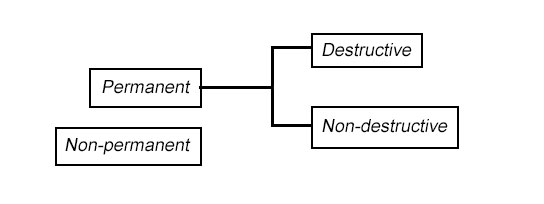
Due to the fact that Form Four is one of that most famous and probably the most executed of the American Kenpo forms (only rivaled by Form Six and Short Form One), it is fairly safe to say that Form Four is also the most personalized of the forms. And, as mentioned in other places in this guide series, personalization of a form is encouraged. What is not encouraged is the folding of this personalization back into the "standard" execution of the form and then teaching it as the new "standard".
In order for the system (and its accompanying information) to survive as a definitive foundation, changes such as personalization must be differentiated from the formerly developed implementation. In other words, if more and more variations are allowed to slip into the "standard" execution; eventually the system itself will not survive as it was originally designed. The system will ultimately morph into an art that is no longer recognizable as it was initially and intentionally implemented.
It is the opinion and aim of this book series that American Kenpo, as a system, should be preserved as developed by SGM Parker - without modifications or personal biases. Even if it is only for a base for further explorations into the science of martial arts. American Kenpo as a foundation is sound and brilliantly designed - and should be conserved for future generations.
Yet, variations are an undeniable truth. That is until a recognized "standard" is developed to stem the tide of change. This book series is an attempt to do just that; lay down a "standard" from which a baseline is established. An unchanging path to which future Kenpoists can refer to in order to obtain a first generational guide to a definitive execution and its accompanying information. A standard without personalization and created without bias to any specific lineage of American Kenpo. Just raw information presented in a manner that one can easily reference. Something Mr. Parker was unable to achieve in his lifetime.
But, even from a first-generational standpoint, some variations are considered notable. Therefore, this guide will highlight those variations and provide a rationale as to their execution and functionality.
It must be noted, that it is beyond the scope of this series to attempt to catalog all variations to any specific form. The variations that are illustrated within this guide are the most distinctive and/or most common exemplars which have arisen primarily during Mr. Parker's lifetime and the development of American Kenpo. Variations that have arisen outside of this time frame are purposely excluded.
Classification of Variations
Variations can be classified into two major types: permanent and non-permanent. Non-permanent variations are variations that are made to a form for a specific purpose, such as for competition or for demonstration. Permanent variations are variations that are consciously or mistakenly made to a form, but ultimately end up becoming a permanent change to the "standard" execution of the form.
Non-permanent variations can be defined as any variation from the "standard" that is made to a form for any specific purpose - without the intent of changing the system of American Kenpo. In other words, this type of variation is made to a form without wanting to teach this variation as a "new" way of executing the "standard" form. Rather, it is executed and/or taught for a specific purpose: such as for tournament competition.
Permanent variations can be further broken down into two (2) types: destructive and non-destructive.
Destructive variations can be defined as a variation that detracts from or eliminates some information that is intended to be demonstrated during the execution of the form. This can include: missing maneuvers, new maneuvers, altered maneuvers, and/or improperly executed maneuvers. Because, by definition, these types of variations effect, alter, change, or otherwise detract from the intended information of a form, destructive variations should be avoided and eliminated.
Non-destructive variations can be defined as a variation that changes the form in some way, but does not interfere with the information that is intended to be demonstrated during the execution of the form. These variations are completely acceptable, but should be noted as a variation from the "standard". These variations are often a "signature" to a form. A "signature" is a distinct modification implemented by a specific lineage of American Kenpo. These "signatures" are developed to denote one lineage from others by way of a simple, physically distinct peculiarity specific to that lineage.
In the early days of American Kenpo's development, Mr. Parker would sometimes place a "signature" on a form. This marker could then be used to determine if a person asking for lessons, at a future date, and stating a specific lineage could be considered truthful by whether they performed a specific form with the correct "signature" or not. Although this was not widespread and was discontinued as American Kenpo grew in popularity, it did occur. And, some of Mr. Parker's students then used this practice to develop "signatures" of their own. A sort of branding to their specific lineage of American Kenpo.

Form variation types
Categories of Variations
Variations, from the standpoint of this book, fall into three (3) major categories, and will have their own subsections within this chapter: Historic, Specific, and General.
Form Four has no Historic variations, so there will not be a subsection provided for this category.
Specific variations are a modification or alteration to a specific maneuver or series of maneuvers that vary from proposed "standard" execution. Each of these variations will be described individually and a rationale or history will usually be provided as to why this variation exists and what classification of variation it falls under.
General variations are changes to characteristics of or modifications to the form that may affect it in a more holistic manner. These variations are generally not isolated to a specific section of the form and are therefore given their own category. Like the other categories of variations, they can be both destructive and non-destructive.